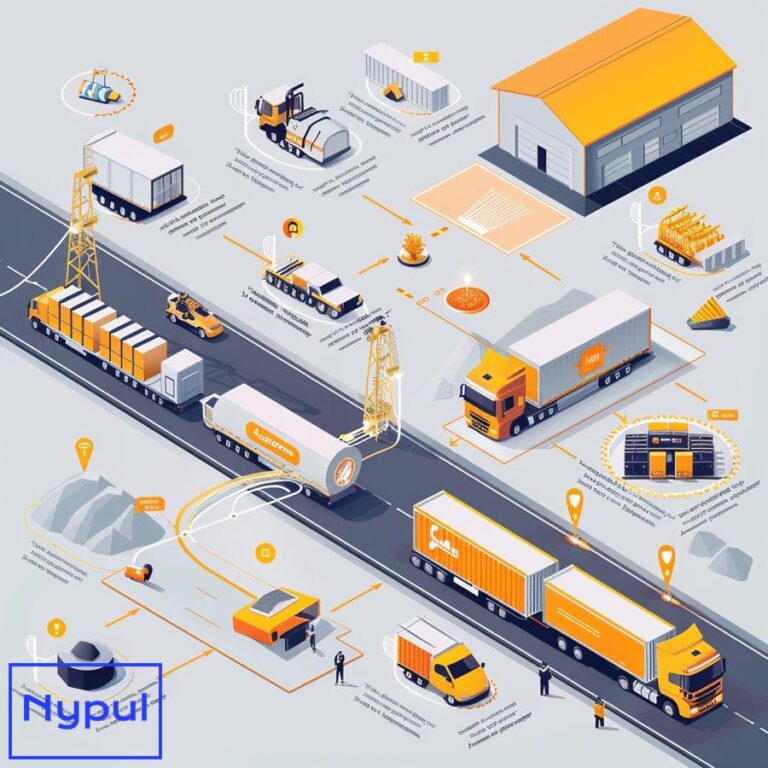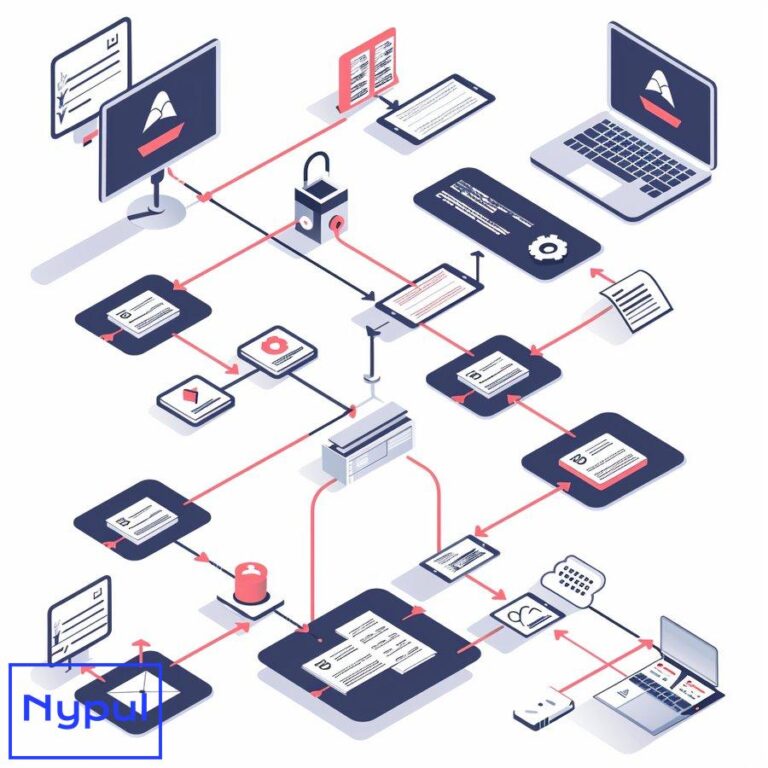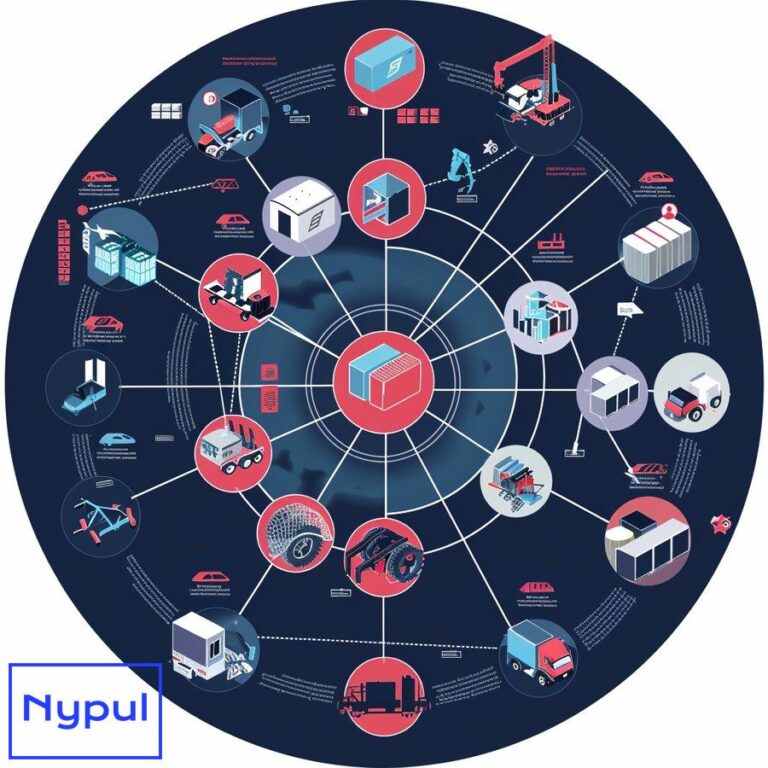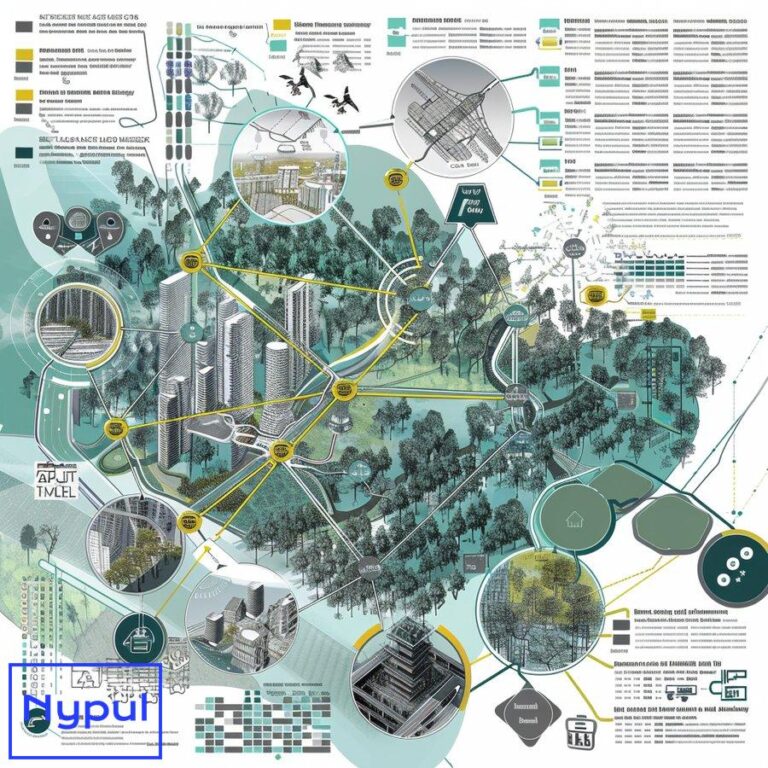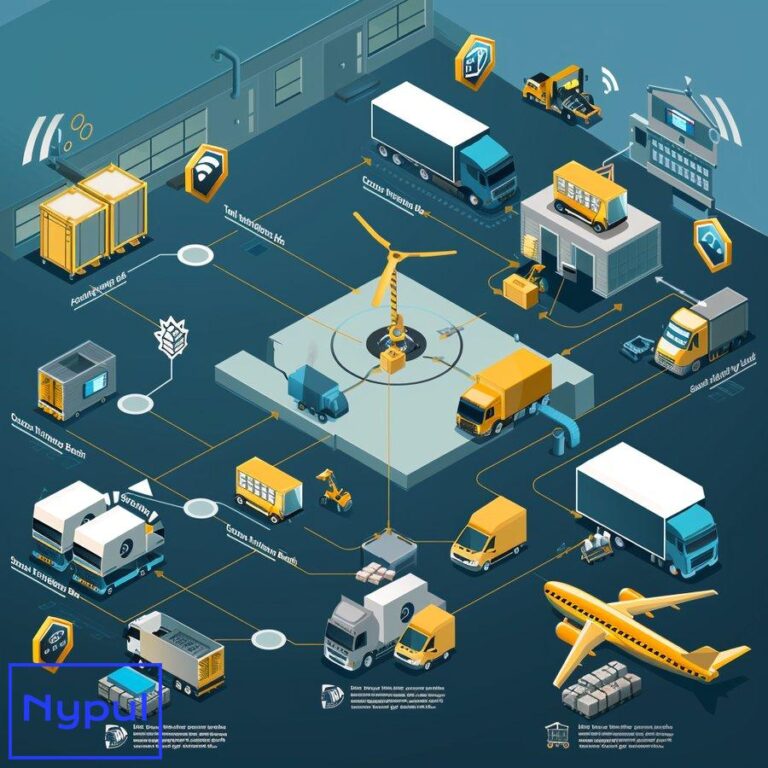What Is Seamless API Integration
What is seamless API integration in drayage and logistics?
Seamless API integration in the context of drayage and logistics refers to the smooth and efficient connection between various software systems and applications used by freight companies, carriers, ports, and other stakeholders in the supply chain. By enabling different platforms to communicate and exchange data in real-time, seamless API integration streamlines processes, reduces manual errors, and enhances visibility across the entire logistics ecosystem.

In essence, an API (Application Programming Interface) acts as a bridge that allows two or more software applications to interact with each other. It defines a set of rules and protocols for how data should be requested, accessed, and shared between systems. When APIs are seamlessly integrated, information can flow automatically from one platform to another without the need for manual intervention or data re-entry.
For example, consider a drayage company that uses a Transportation Management System (TMS) to plan and execute its operations. With seamless API integration, the TMS can connect directly with the systems used by ports, terminals, and shipping lines to receive real-time updates on vessel arrivals, container availability, and gate appointments. This eliminates the need for manual phone calls, emails, or spreadsheet updates, saving time and reducing the risk of errors.
Similarly, seamless API integration enables drayage companies to share data with their customers’ systems, such as Enterprise Resource Planning (ERP) or Warehouse Management Systems (WMS). This allows for automated tracking and tracing of shipments, real-time visibility into inventory levels, and streamlined invoicing and payment processes.
The benefits of seamless API integration in drayage and logistics include:
- Improved efficiency and productivity
- Reduced manual data entry and associated errors
- Enhanced visibility and transparency across the supply chain
- Faster decision-making based on real-time data
- Improved customer service and satisfaction
- Increased scalability and flexibility to adapt to changing business needs
In summary, seamless API integration is a critical enabler for digitalization and automation in the drayage and logistics industry. By connecting disparate systems and allowing them to communicate seamlessly, APIs help to optimize operations, reduce costs, and improve the overall performance of the supply chain.
How does seamless API integration work in practice?
To understand how seamless API integration works in practice, let’s walk through a typical scenario in the drayage and logistics industry.
Scenario: A drayage company receives a new shipment order
-
The customer places an order through their ERP system, which includes details such as the pickup location, delivery destination, cargo information, and required delivery date.
-
The customer’s ERP system sends the order data to the drayage company’s TMS via a seamlessly integrated API. The API translates the data into a format that the TMS can understand and process.
-
The TMS automatically creates a new shipment record and assigns it to an available driver and truck based on factors such as location, capacity, and estimated transit times.
-
The TMS sends a request to the port or terminal’s system via API to check container availability and book a pickup appointment. The port system confirms the appointment and sends back a confirmation number.
-
The driver receives the shipment details and appointment information on their mobile device, which is connected to the TMS via API. They proceed to pick up the container at the designated time and location.
-
As the shipment progresses, the driver’s mobile device sends real-time updates on location, status, and estimated time of arrival (ETA) to the TMS via API. The TMS, in turn, shares this information with the customer’s ERP system and any other relevant stakeholders.
-
Upon delivery, the consignee signs for receipt on the driver’s mobile device, which captures the signature and sends a proof of delivery (POD) to the TMS via API. The TMS then triggers an automated invoice to the customer’s ERP system for payment processing.
Throughout this process, seamless API integration enables the smooth flow of data between multiple systems without manual intervention. This not only saves time and reduces errors but also provides end-to-end visibility into the shipment’s progress for all parties involved.
Key components of seamless API integration in this scenario include:
| Component | Description |
|---|---|
| ERP system | The customer’s system for managing orders, inventory, and financials |
| TMS | The drayage company’s system for planning, executing, and tracking shipments |
| Port/terminal system | The system used by ports and terminals to manage container availability and appointments |
| Driver mobile app | The application used by drivers to receive shipment details, capture PODs, and send updates |
| APIs | The interfaces that enable communication and data exchange between these systems |
By leveraging seamless API integration, drayage companies can automate and optimize their operations, respond quickly to customer needs, and provide a higher level of service and transparency. This ultimately leads to improved efficiency, reduced costs, and better customer satisfaction in the highly competitive logistics industry.
What are the key components of successful API integration?
To achieve successful API integration in the drayage and logistics industry, several key components must be in place. These components ensure that data flows smoothly and securely between systems, enabling seamless communication and collaboration among stakeholders.
1. Robust API design and documentation

A well-designed API is the foundation of successful integration. It should follow industry standards, such as REST (Representational State Transfer) or SOAP (Simple Object Access Protocol), and use clear, consistent naming conventions for endpoints, methods, and parameters. The API should also be thoroughly documented, with detailed specifications on how to request and receive data, handle errors, and authenticate users.
2. Secure authentication and authorization
Security is paramount when integrating APIs, as they often involve the exchange of sensitive data such as customer information, financial transactions, and operational details. Successful API integration requires robust authentication and authorization mechanisms to ensure that only authorized users and systems can access the data. This may include the use of API keys, OAuth tokens, or JSON Web Tokens (JWTs) to verify the identity and permissions of the requesting party.
3. Scalable and reliable infrastructure
As the volume of data and transactions grows, the underlying infrastructure must be able to handle the increased load without compromising performance or availability. Successful API integration requires a scalable and reliable infrastructure that can automatically adjust to changing demands, handle peak traffic, and recover quickly from failures. This may involve the use of cloud-based services, load balancers, and redundant systems to ensure high availability and fault tolerance.
4. Comprehensive error handling and logging
Despite the best efforts, errors and exceptions can occur during API integration due to network issues, data inconsistencies, or system failures. Successful integration requires comprehensive error handling and logging mechanisms to detect, diagnose, and resolve issues quickly. This may include the use of clear error messages, detailed logs, and monitoring tools to track API performance and identify potential problems before they impact users.
5. Flexible data mapping and transformation
Different systems often use different data formats, schemas, and conventions, which can create challenges when integrating APIs. Successful integration requires flexible data mapping and transformation capabilities to convert data between formats and ensure consistency across systems. This may involve the use of data mapping tools, transformation scripts, or middleware platforms to handle the necessary conversions and validations.
6. Continuous testing and monitoring
To ensure the ongoing reliability and performance of integrated APIs, continuous testing and monitoring are essential. This involves regular testing of API endpoints, response times, and error rates, as well as monitoring of production traffic to detect any anomalies or performance issues. Automated testing tools and monitoring platforms can help to catch problems early and ensure that APIs are functioning as expected.
By incorporating these key components into their API integration strategy, drayage and logistics companies can build robust, secure, and scalable integrations that enable seamless communication and collaboration across the supply chain. This ultimately leads to improved efficiency, reduced costs, and better customer service in an increasingly digital and connected industry.
Why is seamless API integration crucial for drayage and logistics operations?
Seamless API integration is not just a nice-to-have feature in the drayage and logistics industry; it is a critical necessity for companies that want to remain competitive and meet the evolving needs of their customers. Here are some of the key reasons why seamless API integration is so crucial for drayage and logistics operations:
Increased efficiency and productivity
One of the primary benefits of seamless API integration is the ability to automate and streamline processes across the supply chain. By enabling different systems to communicate and exchange data automatically, APIs eliminate the need for manual data entry, phone calls, emails, and spreadsheets. This not only saves time and reduces labor costs but also minimizes the risk of errors and delays caused by human intervention. With seamless API integration, drayage and logistics companies can process more shipments faster and with greater accuracy, ultimately increasing their overall efficiency and productivity.
Enhanced visibility and transparency
In today’s fast-paced and complex logistics environment, customers demand real-time visibility into the status and location of their shipments. Seamless API integration enables drayage and logistics companies to provide this level of transparency by sharing data across systems in real-time. For example, by integrating their TMS with the systems used by ports, terminals, and carriers, drayage companies can receive instant updates on container availability, vessel arrivals, and gate appointments. They can then share this information with their customers via API, allowing them to track their shipments from end-to-end and make informed decisions based on the latest data.
Improved customer service and satisfaction
Seamless API integration not only benefits drayage and logistics companies but also their customers. By providing real-time visibility, automated updates, and self-service capabilities, APIs enable customers to access the information they need when they need it, without having to rely on manual communication or wait for responses. This level of transparency and convenience can significantly improve customer satisfaction and loyalty, as customers feel more in control and informed about their shipments. Additionally, by automating processes such as booking, tracking, and invoicing, APIs can help to reduce errors and delays that can frustrate customers and damage relationships.
Increased agility and adaptability
The logistics industry is constantly evolving, with new technologies, regulations, and customer demands emerging all the time. To stay ahead of the curve, drayage and logistics companies need to be agile and adaptable, able to quickly integrate new systems, services, and partners into their operations. Seamless API integration enables this level of flexibility by providing a standardized and scalable way to connect different systems and applications. With APIs, companies can easily add new functionality, such as real-time tracking or predictive analytics, without having to overhaul their entire infrastructure. They can also quickly onboard new customers, carriers, or service providers by integrating their systems via API.
Competitive advantage and differentiation
In a highly competitive industry like drayage and logistics, companies need to find ways to differentiate themselves and offer unique value to their customers. Seamless API integration can provide a significant competitive advantage by enabling companies to offer faster, more efficient, and more transparent services than their rivals. By leveraging APIs to automate processes, optimize routes, and provide real-time visibility, drayage and logistics companies can reduce costs, improve service levels, and win more business. Additionally, by offering API-based services to their customers, such as self-service booking or real-time tracking, companies can create new revenue streams and differentiate themselves in the market.
In summary, seamless API integration is not just a technical capability but a strategic imperative for drayage and logistics companies that want to succeed in today’s digital and customer-centric environment. By enabling automation, visibility, and agility across the supply chain, APIs can help companies to increase efficiency, improve customer service, and gain a competitive edge in a rapidly evolving industry.
What challenges do companies face when implementing seamless API integration?
While seamless API integration offers numerous benefits for drayage and logistics companies, it also presents several challenges that must be addressed to ensure successful implementation and adoption. Here are some of the key challenges that companies face when implementing seamless API integration:

Legacy systems and data silos
Many drayage and logistics companies have been in business for decades and have accumulated a complex patchwork of legacy systems, databases, and applications over time. These systems often operate in silos, with limited ability to communicate or share data with each other. Integrating these disparate systems via API can be a significant challenge, requiring extensive data mapping, transformation, and validation to ensure consistency and accuracy. Additionally, some legacy systems may not have built-in API capabilities, requiring additional development or middleware to enable integration.
Security and data privacy concerns
As APIs enable the exchange of sensitive data across systems and organizations, security and data privacy are critical concerns for drayage and logistics companies. Hackers and cybercriminals can exploit vulnerabilities in APIs to gain unauthorized access to data, steal intellectual property, or disrupt operations. To mitigate these risks, companies must implement robust security measures, such as encryption, authentication, and access controls, as well as comply with relevant data privacy regulations, such as GDPR or CCPA. This can be a complex and ongoing challenge, requiring specialized expertise and resources to ensure the security and integrity of API integrations.
Lack of standardization and interoperability
Despite efforts to promote standardization, the logistics industry still lacks a universal set of APIs and data formats that all stakeholders can use. Different companies, systems, and regions may use different APIs, protocols, and conventions, making it difficult to achieve seamless integration across the supply chain. This lack of interoperability can lead to errors, delays, and inefficiencies, as companies struggle to translate and reconcile data between systems. To overcome this challenge, companies may need to invest in custom development, adapt to multiple API standards, or work with industry consortia to promote greater standardization and collaboration.
Integration with external partners and stakeholders
Drayage and logistics operations involve a complex network of external partners and stakeholders, such as carriers, ports, terminals, and customers, each with their own systems and processes. Integrating with these external parties via API can be a significant challenge, as it requires coordination, communication, and trust between organizations. Companies must work closely with their partners to define API requirements, establish service level agreements, and ensure the security and reliability of data exchanges. Additionally, they must be prepared to handle issues such as API versioning, backward compatibility, and dispute resolution, as partners may have different priorities and constraints.
Change management and user adoption
Implementing seamless API integration is not just a technical challenge but also a organizational and cultural one. Changing the way that people work, communicate, and make decisions can be difficult, especially in an industry with long-standing traditions and practices. To ensure successful adoption of API-based processes, companies must invest in change management, training, and communication to help employees and partners understand the benefits and requirements of the new system. They must also be prepared to handle resistance, concerns, and feedback from users, and adapt their approach as needed to ensure a smooth transition.
Cost and resource constraints
Finally, implementing seamless API integration can be a significant investment for drayage and logistics companies, requiring specialized skills, tools, and infrastructure. Companies must carefully plan and prioritize their API initiatives based on their business goals, customer needs, and available resources. They must also consider the ongoing costs of maintaining, updating, and supporting their API integrations, as well as the potential risks and liabilities associated with API-based services. To manage these costs and constraints, companies may need to adopt agile development methodologies, leverage cloud-based services, or partner with external providers to access the necessary expertise and resources.
In conclusion, while seamless API integration offers significant benefits for drayage and logistics companies, it also presents several challenges that must be carefully addressed to ensure success. By understanding and mitigating these challenges, companies can unlock the full potential of APIs to drive efficiency, visibility, and innovation across the supply chain.
How can seamless API integration improve operational efficiency in drayage?
Seamless API integration can significantly improve operational efficiency in drayage by automating processes, reducing manual intervention, and enabling real-time communication and collaboration among stakeholders. Here are some specific ways that APIs can help to streamline and optimize drayage operations:
Automated dispatch and scheduling
![]()
One of the most time-consuming and error-prone aspects of drayage operations is the manual process of dispatching and scheduling trucks and drivers. With seamless API integration, drayage companies can automate this process by integrating their TMS with the systems used by ports, terminals, and carriers. For example, when a new shipment order is received, the TMS can automatically query the port system via API to check container availability and book a pickup appointment. It can then assign the shipment to an available driver and truck based on factors such as location, capacity, and estimated transit times. This not only saves time and reduces errors but also enables more efficient utilization of assets and resources.
Real-time tracking and visibility
Another key challenge in drayage operations is the lack of real-time visibility into the status and location of shipments. With seamless API integration, drayage companies can provide this visibility by integrating their TMS with the systems used by drivers, carriers, and customers. For example, by equipping drivers with mobile devices that are connected to the TMS via API, companies can receive real-time updates on the location, status, and ETA of each shipment. They can then share this information with customers via API, allowing them to track their shipments from end-to-end and make informed decisions based on the latest data. This level of visibility not only improves customer service but also enables more proactive and efficient management of exceptions and delays.
Optimized route planning and execution
Drayage operations often involve complex and dynamic routing challenges, such as traffic congestion, road closures, and appointment windows. With seamless API integration, drayage companies can optimize their route planning and execution by leveraging real-time data from multiple sources. For example, by integrating their TMS with traffic and weather APIs, companies can receive up-to-date information on road conditions, accidents, and weatherforecasts. This information can be used to dynamically adjust routes and schedules, minimizing delays and maximizing efficiency. Additionally, by integrating with port and terminal systems, companies can receive real-time updates on gate congestion, container availability, and appointment slots, allowing them to optimize their pickup and delivery schedules.
Automated documentation and compliance
Drayage operations involve a significant amount of paperwork and compliance requirements, such as customs declarations, bills of lading, and proof of delivery. Seamless API integration can help to automate and streamline these processes by enabling the electronic exchange of documents and data between systems. For example, when a driver picks up a container, they can use a mobile app to capture and transmit the necessary documentation via API to the TMS. The TMS can then automatically generate and send the required customs documents to the relevant authorities, reducing processing times and minimizing the risk of errors or delays.
Improved capacity utilization and asset management
By leveraging real-time data and analytics enabled by API integration, drayage companies can optimize their capacity utilization and asset management. For instance, by integrating their TMS with systems used by shippers, carriers, and other logistics providers, companies can gain visibility into upcoming demand and available capacity across their network. This allows them to make more informed decisions about asset allocation, route optimization, and load consolidation, ultimately improving efficiency and reducing costs.
Enhanced customer self-service capabilities
Seamless API integration enables drayage companies to offer enhanced self-service capabilities to their customers, reducing the need for manual intervention and improving overall efficiency. For example, by exposing certain APIs to customers, companies can allow them to book shipments, track containers, access documents, and generate reports directly through their own systems or web portals. This not only improves the customer experience but also reduces the workload on customer service teams, allowing them to focus on more complex issues and value-added services.
Streamlined invoicing and payment processes
API integration can significantly improve the efficiency of invoicing and payment processes in drayage operations. By connecting the TMS with accounting and financial systems, companies can automate the generation and sending of invoices based on completed shipments and agreed-upon rates. Similarly, APIs can enable real-time payment processing and reconciliation, reducing delays and improving cash flow. This level of automation not only saves time and reduces errors but also provides greater visibility into financial performance and helps to identify opportunities for cost savings or revenue optimization.
In conclusion, seamless API integration offers numerous opportunities to improve operational efficiency in drayage. By automating processes, enabling real-time communication, and providing greater visibility and control, APIs can help drayage companies to optimize their operations, reduce costs, and deliver better service to their customers. As the industry continues to evolve and face new challenges, those companies that embrace API integration will be better positioned to adapt and thrive in an increasingly digital and competitive landscape.
What role does data security play in seamless API integration?
Data security plays a critical role in seamless API integration for drayage and logistics operations. As APIs enable the exchange of sensitive information across systems and organizations, ensuring the confidentiality, integrity, and availability of this data is paramount. Here’s an in-depth look at the various aspects of data security in API integration:
Authentication and authorization
One of the fundamental aspects of data security in API integration is ensuring that only authorized users and systems can access the data. This involves implementing robust authentication and authorization mechanisms:
Authentication verifies the identity of the user or system making the API request. Common methods include:
- API keys: Unique identifiers assigned to each API user
- OAuth tokens: Secure delegated access tokens
- JSON Web Tokens (JWTs): Compact, self-contained tokens for securely transmitting information
Authorization determines what actions an authenticated user or system is allowed to perform. This typically involves:
- Role-based access control (RBAC): Assigning permissions based on user roles
- Scope-based access: Limiting access to specific API endpoints or data types
- Fine-grained permissions: Controlling access at a granular level, such as individual fields or records
Implementing these mechanisms ensures that only legitimate users can access the API and that they can only perform actions for which they have explicit permission.
Data encryption
Encryption is essential for protecting sensitive data as it travels between systems and while it’s stored. In API integration, this involves:
- Transport Layer Security (TLS): Encrypting data in transit using HTTPS
- End-to-end encryption: Encrypting data from the source to the destination, even if it passes through intermediary systems
- Data at rest encryption: Protecting stored data, such as in databases or file systems
By implementing strong encryption practices, drayage and logistics companies can safeguard sensitive information such as customer details, financial data, and operational insights from unauthorized access or interception.
Input validation and sanitization
To prevent security vulnerabilities such as SQL injection or cross-site scripting (XSS) attacks, it’s crucial to implement thorough input validation and sanitization for all API requests. This involves:
- Validating data types, formats, and ranges
- Sanitizing user inputs to remove potentially malicious content
- Implementing parameterized queries to prevent SQL injection
By carefully validating and sanitizing all inputs, companies can protect their systems from malicious attacks that exploit vulnerabilities in API endpoints.
Rate limiting and throttling
To prevent abuse of APIs and protect against denial-of-service (DoS) attacks, it’s important to implement rate limiting and throttling mechanisms. These can include:
- Request limits: Restricting the number of API calls a user can make within a given time period
- Concurrent connection limits: Controlling the number of simultaneous connections from a single user or IP address
- Bandwidth throttling: Limiting the amount of data that can be transferred within a specific timeframe
These measures help ensure fair usage of the API and protect against both intentional attacks and unintentional overuse that could impact system performance.
Logging and monitoring
Comprehensive logging and monitoring are essential for detecting and responding to security incidents in API integration. This includes:
- Detailed API access logs: Recording all API requests, including user identities, timestamps, and accessed resources
- Real-time monitoring: Implementing systems to detect and alert on suspicious activity or anomalies
- Security Information and Event Management (SIEM): Centralizing and analyzing security logs from multiple sources
By maintaining detailed logs and implementing robust monitoring systems, drayage and logistics companies can quickly identify and respond to potential security threats or breaches.
Compliance with data protection regulations
As drayage and logistics operations often involve the handling of personal and sensitive data, companies must ensure their API integrations comply with relevant data protection regulations such as:
- General Data Protection Regulation (GDPR) in the European Union
- California Consumer Privacy Act (CCPA) in the United States
- Personal Information Protection and Electronic Documents Act (PIPEDA) in Canada
Compliance may involve implementing features such as:
- Data minimization: Collecting and processing only the necessary data
- User consent management: Obtaining and managing user consent for data processing
- Data subject rights: Enabling users to access, correct, or delete their personal data
By ensuring compliance with these regulations, companies can avoid legal risks and build trust with their customers and partners.
Regular security audits and penetration testing
To maintain the security of API integrations over time, it’s crucial to conduct regular security audits and penetration testing. This involves:
- Vulnerability assessments: Identifying potential weaknesses in the API infrastructure
- Penetration testing: Simulating real-world attacks to test the effectiveness of security measures
- Code reviews: Examining API code for potential security flaws or vulnerabilities
By regularly assessing and testing their API security, companies can identify and address potential vulnerabilities before they can be exploited by malicious actors.
API versioning and deprecation
Proper management of API versions is crucial for maintaining security while allowing for updates and improvements. This includes:
- Clear versioning policies: Communicating changes and deprecations to API users
- Secure deprecation processes: Ensuring that outdated or vulnerable API versions are properly phased out
- Backward compatibility: Maintaining support for older versions while encouraging migration to newer, more secure versions
By carefully managing API versions, companies can ensure that all users are using secure and up-to-date API endpoints while minimizing disruption to their operations.
In conclusion, data security plays a vital role in seamless API integration for drayage and logistics operations. By implementing robust security measures across authentication, encryption, input validation, monitoring, and compliance, companies can protect sensitive data, maintain the integrity of their systems, and build trust with their partners and customers. As the threat landscape continues to evolve, maintaining a strong focus on API security will be essential for companies looking to leverage the benefits of seamless integration while mitigating the associated risks.
